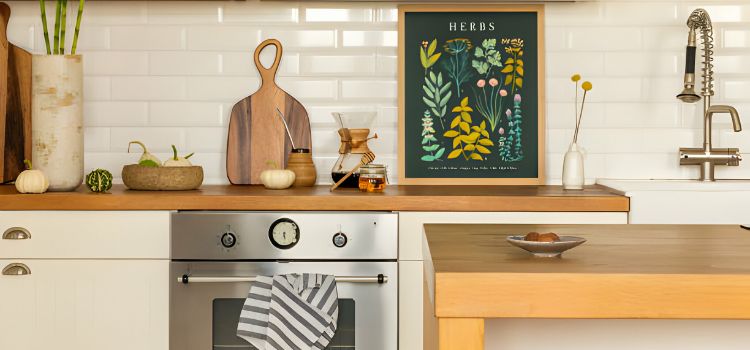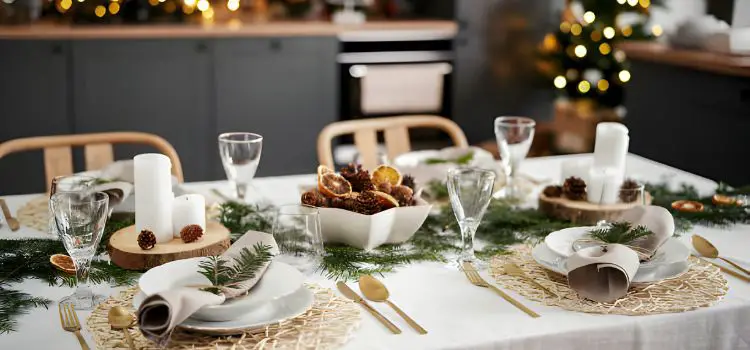As an Amazon Associate, I earn from qualifying purchases

Explore the essence of Polish cuisine in the vibrant kitchen of Poland. From traditional pierogi to savory bigos, the kitchen serves as the beating heart of culinary tradition and innovation. Discover cherished family recipes passed down through generations in every corner of this dynamic country. Whether you’re strolling through Krakow’s charming streets or exploring Warsaw’s bustling markets, the kitchen in Poland invites you to indulge in a tapestry of flavors. Join us as we uncover the secrets of this culinary wonderland, where every dish is a celebration of heritage and deliciousness. Experience Poland’s rich culinary heritage firsthand in its diverse and flavorful kitchen.
I. Traditional Polish Cuisine:

Delving into the heart of Polish kitchens, the country’s culinary identity is inseparably tied to its traditional dishes. Pierogi, those delectable dumplings brimming with myriad fillings, are a culinary symbol. Whether stuffed with potatoes, cheese, or savory meats, they epitomize the comforting essence of Polish home cooking. Bigos, the renowned hunter’s stew, is another cornerstone, marrying sauerkraut, meats, and aromatic spices in a harmonious dance of flavors. In this section, we will immerse ourselves in the ingredients, techniques, and cultural significance of these cherished recipes, exploring how they serve as a culinary bridge connecting generations.
Polish culinary traditions have deep roots in the country’s history, reflecting its agricultural and cultural heritage. The simplicity and heartiness of Polish dishes tell tales of a land where resilience and resourcefulness were paramount. Rooted in agricultural practices, many traditional recipes showcase a reliance on locally sourced ingredients, creating a cuisine that is both flavorful and practical. As families gathered around kitchen tables, the transfer of culinary knowledge became a familial legacy, ensuring the preservation of traditional recipes for future generations.
II. Kitchen Designs and Layouts:

The architectural layout of Polish kitchens tells a tale of functionality, efficiency, and a keen appreciation for design aesthetics. From the quaint charm of rural kitchens adorned with sturdy wooden furniture to the sleek and modern layouts of urban homes, the evolution of Polish kitchen designs is a testament to the nation’s adaptability. This section will unravel the historical influences that have shaped kitchen layouts, blending traditional elements with contemporary touches.
Polish kitchens, historically centered around practicality and functionality, have evolved over time to meet the changing needs of households. The traditional design often featured a central hearth, around which daily life revolved. In rural areas, kitchens were communal spaces, serving as the heart of the household. The influence of historical architecture is evident in the use of natural materials, such as wood and stone, creating a warm and inviting atmosphere.
In modern urban settings, Polish kitchens have embraced sleek designs and innovative layouts. Open-concept kitchens are becoming increasingly popular, fostering a sense of connection between cooking, dining, and socializing. The integration of modern appliances and technology has enhanced efficiency while maintaining a nod to traditional design elements. This harmonious blend of old and new creates kitchens that are not only functional but also aesthetically pleasing.
III. Regional Influences on Polish Kitchens:

Poland’s diverse topography has gifted its kitchens with a rich tapestry of regional flavors. Coastal regions boast an abundance of fish dishes, mountainous areas showcase hearty game meats, and fertile plains contribute to the agricultural bounty. We will embark on a virtual tour of these regions, exploring how local ingredients and culinary practices have shaped the kitchens in each corner of Poland.
The regional diversity of Polish cuisine is a testament to the country’s geographical and cultural richness. Coastal regions, such as Pomerania, offer an array of fish dishes, including herring and Baltic salmon. The use of pickled vegetables and marinated herrings reflects the historical influence of trade routes connecting Poland with Scandinavia.
In the mountainous regions of Podhale, traditional dishes feature game meats like venison and wild boar, showcasing the resourcefulness of mountain communities. These hearty meals, often accompanied by locally sourced mushrooms and berries, provide sustenance in the challenging alpine environment.
The fertile plains of Wielkopolska and Mazovia contribute to the agricultural abundance of Poland. Here, kitchens are enriched with dishes featuring potatoes, cabbage, and a variety of grains. The famous Polish sausage, kiełbasa, is a staple in many regional kitchens, reflecting a longstanding tradition of preserving meats.
IV. Fusion of Tradition and Modernity:

In recent years, Polish kitchens have witnessed a culinary renaissance, as chefs delicately balance tradition with innovation. The fusion of classic recipes with modern culinary techniques has given birth to contemporary Polish cuisine. This section will introduce pioneering chefs and avant-garde restaurants that epitomize this exciting amalgamation, redefining the culinary landscape while paying homage to the roots of Polish gastronomy.
Contemporary Polish cuisine is a dynamic interplay of innovation and tradition, reflecting the evolving tastes and preferences of a globalized world. Renowned chefs like Magda Gessler and Wojciech Modest Amaro have played pivotal roles in pushing the boundaries of Polish gastronomy.
One notable trend is the reimagining of traditional dishes with a modern twist. Chefs are experimenting with presentation, flavor profiles, and ingredient pairings, breathing new life into age-old recipes. This culinary evolution is not merely about embracing global influences but also rediscovering and elevating the richness of Poland’s culinary heritage.
Innovative restaurants in Warsaw, Krakow, and other urban centers are at the forefront of this culinary revolution. Here, patrons can savor dishes that honor tradition while embracing contemporary culinary techniques. The infusion of international flavors, coupled with a commitment to local and seasonal ingredients, defines the modern Polish culinary experience.
V. Kitchen Gadgets and Appliances:
The modern Polish kitchen is a marvel of efficiency, equipped with an array of gadgets and appliances designed to streamline the cooking process. From high-quality knives and traditional ceramic cookware to state-of-the-art appliances, this section will serve as a tour of the tools that have become indispensable in Polish kitchens, reflecting a blend of tradition and technological advancement.
Advancements in kitchen technology have significantly impacted the way Polish households approach cooking and meal preparation. High-quality knives crafted from stainless steel or Damascus steel are essential tools in every Polish kitchen, reflecting a commitment to precision and craftsmanship.
Traditional ceramic cookware, often hand-painted with intricate designs, remains popular for stovetop cooking. These durable and aesthetically pleasing pieces add a touch of tradition to modern kitchens. The versatility of ceramic cookware is well-suited for preparing traditional dishes that require slow cooking and even heat distribution.
In terms of modern appliances, Polish kitchens are equipped with the latest innovations to enhance efficiency. High-end blenders, food processors, and multicookers have become essential for busy households, allowing for quick and convenient meal preparation. The integration of smart technology, such as Wi-Fi-enabled ovens and refrigerators, reflects the increasing digitalization of contemporary kitchens.
VI. Culinary Traditions and Celebrations:
Polish kitchens come alive during cultural celebrations and traditions. Whether it’s the meticulous preparations for the traditional Wigilia feast on Christmas Eve or the crafting of paczki, delectable Polish doughnuts, for Fat Thursday, this section will illuminate the customs and rituals that unfold in Polish kitchens during special occasions. The kitchen becomes not just a place of cooking but a theater of cultural expression and familial bonds.
Polish culinary traditions are deeply intertwined with religious and seasonal celebrations, creating a tapestry of rituals that elevate the act of cooking to a sacred art. One of the most cherished traditions is the Wigilia feast on Christmas Eve. Families come together to share a 12-course meal, each dish symbolizing a different aspect of the Christmas story. The meticulous preparation of dishes like borscht, pierogi, and kutia involves a labor of love that extends beyond mere sustenance.
Fat Thursday, celebrated on the last Thursday before Lent, is another culinary tradition that brings joy to Polish kitchens. On this day, it is customary to indulge in paczki, deep-fried doughnuts filled with jam or custard. The act of making and sharing paczki is a festive affair, with bakeries and households alike embracing the spirit of indulgence.
Throughout the year, Polish kitchens are abuzz with preparations for other celebratory occasions, including weddings, birthdays, and name days. Each event calls for a unique array of dishes, often prepared with meticulous attention to detail. Traditional dishes like golabki (cabbage rolls), kielbasa, and various pierogi variations take center stage during these festivities.
VII. Local Markets and Ingredients:
Poland’s local markets stand as vibrant hubs where the culinary journey begins. Bursting with colorful displays of fresh produce, regional cheeses, and artisanal products, these markets are a testament to the abundance of ingredients that find their way into Polish kitchens. We will meander through these bustling markets, exploring the diversity of ingredients that add vibrancy to Polish dishes.
Local markets in Poland are a sensory delight, offering a kaleidoscope of colors, aromas, and flavors. The seasonal abundance of fruits and vegetables, from strawberries and cherries in summer to apples and plums in autumn, dictates the rhythm of Polish culinary life. Families often frequent these markets to source the freshest ingredients for their daily meals.
Cheese enthusiasts can explore regional varieties such as Oscypek, a smoked sheep’s milk cheese from the Tatra Mountains, or Bryndza, a crumbly sheep’s milk cheese. The diversity of sausages, including Krakowska, Kabanosy, and Kaszanka, showcases the rich tradition of charcuterie in Polish cuisine. Freshly baked bread, often featuring seeds and grains for added texture, is a staple in every Polish household.
Artisanal products, such as honey, pickles, and preserves, further contribute to the tapestry of flavors in Polish kitchens. The tradition of preserving fruits and vegetables through pickling and fermentation is a nod to the country’s agrarian roots. These preserved delights add a burst of tanginess and crunch to meals throughout the year.
VIII. The Future of Polish Kitchens:
As Poland marches forward, so do its kitchens. This section will peer into the crystal ball of culinary trends, sustainability practices, and the role of technology shaping the future of Polish kitchens. From the rise of farm-to-table movements to the integration of innovative cooking methods, we will uncover the exciting possibilities that lie on the horizon, ensuring that Polish kitchens continue to evolve without losing sight of their cultural roots.
The future of Polish kitchens is poised at the intersection of tradition and innovation. A growing emphasis on sustainability and a renewed appreciation for locally sourced, seasonal ingredients are shaping the culinary landscape. The farm-to-table movement has gained momentum, with an increasing number of households opting for fresh produce from local farmers’ markets.
You Can Also learn About In Frame Kitchen
Innovations in cooking technology are transforming the way meals are prepared. Energy-efficient appliances, smart kitchen systems, and advancements in food preservation contribute to a more sustainable and convenient culinary experience. The integration of smart technology allows for precise temperature control, efficient energy use, and even remote monitoring of cooking processes.
The culinary scene in Poland is witnessing a surge in interest in traditional and regional cuisines. Chefs and home cooks alike are delving into the rich tapestry of historical recipes, putting a contemporary spin on classic dishes. The preservation of culinary heritage is becoming a focal point, with initiatives to document and celebrate traditional recipes, cooking techniques, and regional specialties.
Conclusion:
In conclusion, Polish kitchens encapsulate a narrative that transcends time, weaving together the threads of tradition, innovation, and a deep-rooted love for culinary craftsmanship. Beyond being mere spaces for meal preparation, these kitchens are the guardians of a nation’s history, telling stories through the sizzle of pans and the aroma of simmering stews. From the warmth of family kitchens crafting time-honored recipes to the cutting-edge techniques employed by modern chefs pushing culinary boundaries, the kitchens in Poland beckon us to savor not just the flavors but the cultural richness they represent.
Leave a Reply